Crunching the Numbers on a New Model of Health Care from the Age Right PAC Network

Crunching the Numbers on a New Model of Health Care from the Age Right PAC Network

How “VBAs” are Scoring Huge Benefits for Patients, Payers and Providers
Give Steve Fogg a cup of coffee and giant batch of numbers to crunch and there’s one happy man.
Fogg is a nationally recognized financier and a popular speaker on property valuation, risk management and reimbursement methodology. Fogg is Chief Financial Officer of the Age Right PAC Network, as well as his family’s multi-generational senior health care company (senior living, post acute, skilled nursing, Medicaid insurance, rehab therapy, pharmacy services). So, he is constantly pulling and analyzing data to see if an initiative is working — or not.
Lately, the numbers are shining bright on what was an experiment and now, a proven new model of health care that checks all of Fogg’s boxes:
Does this model produce better outcomes for patients? Check.
Does it improve efficiencies and lower costs for providers? Check.
Does it lower costs and create happier members for payers? Check.
And all this happens through the innovative, collaborative group called the Age Right PAC Network. It’s a growing family of competing providers and payers who together, create what’s known as Value Based Agreements (VBAs) or Value Based Programs (VBPs). VBAs and VBPs are basically the same thing. Providers and payers work together on behalf of the patient, with a pre-determined set of measures, which are typically quality and or cost of care related — versus volume related.
Just look at some of the wins VBAs are earning for participating patients, providers and payers:
- Unprecedented lines of communication and trust between patients, payers and providers.
- Clear path to success and incentives to continue improving.
- Higher quality of care for patients and lower cost of care.
- Lower hospital readmission rates. (Age Right PAC Network providers, collectively, have among the lowest hospital readmission rates in the country when compared to like size or bigger long term care provider groups.)
- Financial gains for patients, payers and providers.
In today’s Aging Right Blog, Fogg is taking out his white board to show us how VBAs are upending the old, often contentious way payers and providers interact. Because, as we all know, the current path on the health care continuum – from youth to middle age to senior – is twisty and rocky. Fogg and other health care leaders are forging a smoother road!
Q: First, Steve, how did the Age Right PAC Network come up with the idea of these VBAs?
A: I’m excited to talk about this! These VBAs were driven out of heath care purchasers/payers wanting to redirect how health care providers are held accountable — moving health care provider behaviors away from “volume of services” to “quality and cost of services” provided. There are more and more tangible examples of the VBA model driving positive results for all stakeholders. I believe these arrangements will continue to grow in magnitude to overall health care spend.
Q: We’ll get to those positive results in a minute but first, what are the VBA relationships the Age Right PAC Network has today?
A: We have three primary VBAs in place today: First, a VBA with Regence BlueCross BlueShield of Oregon, which aligns funding based on the success of reaching stated quality metrics; Second, our VBA with Age Right Advantage Health Plan (ISNP) that provides traditional Medicare Advantage insurance coverage to seniors that reside in long term care facilities. Those facilities have the opportunity to receive a quality incentive payment based on agreed upon quality metrics; and third, our MCR FFS agreements with CMS now apportion 2% of the daily rates to a VBP arrangement. The program combines 2% of all SNF payments in the country. Then a large portion of these total dollars are reallocated to individual SNF’s based on their performance with regard to “hospital readmissions” that occur, as compared to prior year’s performance and to the average performance of the industry. Right now, during COVID, this program calculation has been suspended but we expect it to resume once the pandemic subsides.
Q: Can you take us through a few examples of how these Age Right PAC Network VBA’s work in real life, and, most important, how they’re helping people.
A: Absolutely! Ready to walk through some numbers? First, let’s look at our MCR VBP. Here, we’ve placed a high priority on working to improve our short-stay resident episode hospital readmissions (HRA). One Age Right PAC Network member launched a multi-faceted effort that involved improved care coordination and a heightened onsite physician and/or advanced practice clinician visits that happen immediately upon a change of condition. The results? I’m excited to tell you that our HRA rates are plunging! We’re proud to have some of the lowest HRA rates in the Country for a regional long term care provider. In terms of economics, for FY2021, we were able to return an additional $722,000 in additional MCR funds due to our HRA rate performance versus prior years and against our peers. We were able to convert a 2% of total MCR funds payment into the incentive bucket by earning back 3.21% of total MCR funds received. These are tangible dollars that allow us to use for other important initiatives we have going on.
Here’s another example: We have a VBA with Regence BlueCross BlueShield of Oregon where we’re working together to drive three specific quality metrics: hospital readmissions, emergency room visits and length of stay. Through more integrated care coordination and faster clinician visits when a patient’s condition changes, we’ve seen a huge impact. This develops mutual trust with Regence BlueCross BlueShield of Oregon to collaborate in a more aligned model. Today this alignment has increased the quality for our residents as well as the funding of the model. Our goal is to continue to focus on quality, patient experience and ensure the funding of the model always aligns with the quality delivered.
Q: How much would you like to see that climb?
A: We would like to see 50% of the funding tied to this type of arrangement or even better, we’d like to move to an episodic funding method, which shifts 100% of the post-acute care risk to us. Again, and most importantly, our residents are experiencing better outcomes by our improving on these metrics.
Q: What’s the economic magnitude of these VBA arrangements versus the total economic spend?
A: VBAs are successful because they align the goals of the payer and provider as opposed to different economic models that pay based on volume. They also provide the incentives for all stakeholders to work together in improving the residents experience and lower the cost of care.
Today, the magnitude of VBA dollars is fairly small to the total health care spend, which is 2-3%. That said, we fully expect these arrangements to continue to gain traction over time and exceed 50% of the total spend in the next five years. Additionally – and this is something all providers need to think about – providers not interested in pursuing VBAs run the risk of being removed from payor panels and that could lead to a diminished market share.
Q: So, what percentage of the total insurance dollar spent for MA plan members goes to post acute care? (SNF and HHA)?
A: I’m glad you asked that because one of the challenges that post acute care providers have experienced in working with MA payors is that the post acute spend is less than 10 cents of the health care dollar spend of the plan. The largest utilizers of the health care dollar are hospitals and prescription medications. Because of the post acute spend being this low, the providers in this space don’t have as much negotiating leverage when at the table with the MA plans. Creating a VBA with MA plans is another way for post acute care providers to align quality goals with the funding.
Q: As you see all this encouraging data roll in, what’s been the biggest “wow” moment you’ve had that convinces you this new model of care is the way to go.
A: I love nothing better than seeing how numbers can point to a new and better way of meeting the needs of all parties. And the direction is clear. We’re finding VBAs are driving tangible savings and improved resident experience. As for surprising data that made me think, “wow!” there was that moment when reviewing the numbers on reduced hospital episodes.
Here’s an example from one of our Age Right PAC Network providers regarding two VBA metrics:
- For hospital readmissions for short stay episodes: Each hospital episode average cost is $13,500. The provider averages 400 short-stay residents/day in all our SNF’s and approximately 6,500 admissions/yr. Every 1% swing in hospital readmissions (HRA) rate has an impact of $877,500 (6500 admissions times 1% times $13,500)!
- For hospital admissions from long-term residents: The provider’s goal is to maintain a threshold of no more than 350 hospital episodes per 1000 members/yr. in its MA ISNP (Ager Right Advantage) — and it has been largely successful in achieving that goal. This allows the provider to have more dollars available in the plan to provide supplemental benefits to members. The role of the physicians and advanced practice clinicians visible daily in those facilities is a primary driver of results. Having them there to treat residents when a change of condition occurs, without needing to send them to the hospital, is a much improved experience for the resident. And the residents are gaining trust and confidence that they’re in the right setting.
There have also been savings with emergency room visits, length of stay changes, and prescription drug utilization. Strengthening the VBA bucket will heighten the likelihood of further improvement going forward.
Q: What are the other options for providers trying to create cost efficiencies while also improving patient outcomes?
A: There are really three different paths that could/will play out going forward for post acute care providers and how they work with MA plans: First, continued growth in VBA’s with a greater percentage of the savings tied to VBA success metrics; second, transitioning to “episodic reimbursement methodology” where post-acute care providers accept 100% of the risk of the total cost of care; and third, the status quo as it is today with the funding being based largely off of fees earned based on volume – whether in terms of LOS or services provided.
We’re optimistic that the first two options are the most likely scenarios that will play out with success.
Q: Are there misconceptions about VBA’s?
A: Yes. One of them is that VBAs are just another way for payers to lower the amount of dollars they pay and result in a no win situation for providers. But as the numbers show, we’re finding just the opposite! Being held accountable to a VBA can lead to the following positive results for a provider:
- Increased dollars from VBAs in place.
- Increased market share from those payers seeing the positive results.
- Increased employee satisfaction working in an environment of providing the best possible experience and satisfaction for the resident. This can lead to improved retention and greater interest by those wanting to enter the long term care profession.
- More 5 star scores, which lead to greater market shares, in general.
There’s also a misconception that providers are already doing the best they possibly can with desired quality outcomes. But that’s a risky situation for a provider to be in. There’s always room for improvement, right? And change is inevitable. Being in denial will only more quickly drive failure.
Q: How do providers get started creating VBAs?
A: First and foremost, the provider needs to buy-in to the fact that improving outcomes in common VBA’s are better for them and drive higher resident satisfaction/experience. Without that buy-in, improvements will not take place.
Second, the provider needs to engage with MA payers to gauge their interest level. Here are a few things the provider and MA payer should discuss:
- Percentage of total dollars tied to the VBA.
- Specific quality metrics to be held accountable to hospital readmissions, emergency room visits, prescription drug usage, length of stay and specific clinical/quality outcomes.
- The methodology of how VBA performance/results leads to an improved bottom line for the provider: direct additional incentive, increase in future year rates, upside and downside risk features.
Third, is to formally negotiate and enter into a VBA with MA payers. Other than the VBA metrics, this is similar to how post-acute care providers have historically been negotiating contracts.
Lastly, and most important, the provider needs to be able to operationalize in a manner that allows for success/improvement with the various VBA metrics they are being held accountable too. It’s this step that will separate high quality providers from low performing providers. This is where all the magic happens! It requires quality leadership, strategic foresight, educated/quality staff, effective process/data monitoring systems/review of results and action taken when necessary. You can’t just enter into a VBA with a payer and then do nothing. Otherwise, the provider will fail.
The data is so encouraging that when payers and providers work together through these innovative VBAs, everyone wins!
Q: Thank you Steve. Final question — we always ask our experts if they would share a few of their life hacks on “aging right.”
A: Sure! Give me sunshine. I love hot climates like Palm Springs and Hawaii. I could spend an entire vacation pool or beach side and not go anywhere else! For sports and hobbies, I love tennis and racing cars. For me, aging right means constantly striving for balance with my work, family, friends and recreation. I’m constantly assessing if I’m giving each area enough time and optimizing the benefits of a balanced life — of aging right!
Interested in learning more about VBAs and the Age Right PAC Network? Contact us at contracting@agerightcs.com
Sign up here for your free, Aging Right Blog. Our mission is delivering collaborative, tactical content that educates and inspires today’s leaders to deliver solutions that help every individual age right. Join us!


